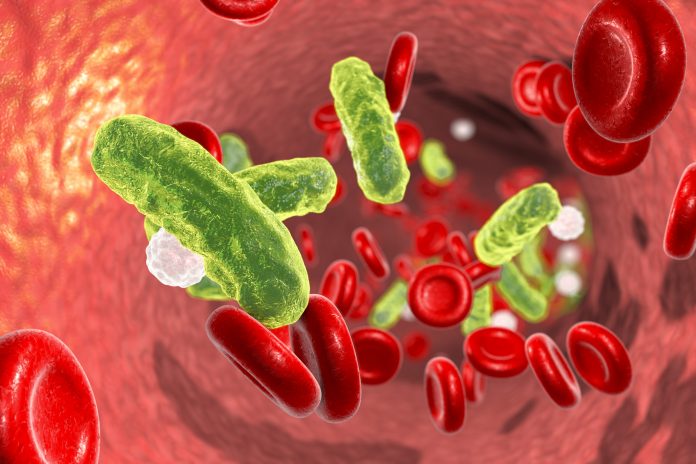How do we tackle sepsis? What role do infection prevention and control play? What are the symptoms? How do we treat sepsis and reduce its risk? Let’s discover more about sepsis here
According to the World Health Organization’s (WHO) first-ever global sepsis report in 2020, efforts to combat the millions of preventable deaths and disabilities caused by sepsis are hindered by significant knowledge gaps, especially in developing and middle-income nations.
How do we tackle sepsis?
Sepsis kills a predicted 11 million people worldwide every year, including millions of children. Sepsis also disrupts the lives of millions more, yet there is a pressing need for better data. (1) About 49 million people around the world suffer from sepsis. (1, 2)
“The world must urgently step up efforts to improve data about sepsis so all countries can detect and treat this terrible condition in time,” Dr Tedros Adhanom Ghebreyesus, WHO Director-General underlined.
“This means strengthening health information systems and ensuring access to rapid diagnostic tools, and quality care including safe and affordable medicines and vaccines,” the WHO Director-General added.
Sepsis is a reaction to infection. If sepsis isn’t diagnosed and treated early, it can “lead to septic shock, multiple organ failure and death,” WHO notes. (1) For many infectious diseases around the world, it is often the last and most common cause of death, WHO notes.
In the community setting, sepsis is often presented as the clinical deterioration of preventable infections. Maternal sepsis is another name for sepsis that occurs during pregnancy, during or after childbirth, or after abortion.
Sepsis in newborn babies is termed neonatal sepsis. Although highly avoidable, maternal and neonatal sepsis is still one of the leading causes of death among pregnant women and neonates. (2)
Infection prevention and control
According to the WHO’s first-ever global infection prevention and control (IPC) report, good IPC programmes can reduce healthcare infections by 70%.
Intensive care patients and neonates are particularly vulnerable to sepsis, we hear. Plus, the report also found that approximately one in four hospital-treated cases and nearly 50% of all sepsis-related organ dysfunction cases treated in adult intensive-care units are healthcare-associated.
The COVID pandemic highlighted several challenges and shortcomings in IPC across all regions and countries, including those with the most robust IPC programmes, Dr Tedros Adhanom Ghebreyesus noted.
“It has also provided an unprecedented opportunity to take stock of the situation and rapidly scale up outbreak readiness and response through IPC practices, as well as strengthening IPC programmes across the health system. Our challenge now is to ensure that all countries are able to allocate the human resources, supplies and infrastructures this requires,” Dr Tedros Adhanom Ghebreyesus continued. (3)
Dr Zisis Kozlakidis from Laboratory Services and Biobank Group, The International Agency for Research on Cancer, WHO, in an earlier edition of Open Access Government, said the continuing coronavirus pandemic is a testament to the impact microbial pathogens can have on populations on a large scale. (4)
Sepsis symptoms
But what about the symptoms of sepsis? While a fever is a common symptom of a septic infection, it can also lead to shivering, cold extremities and low body temperature. You may have difficulty breathing or rapid breathing. You may also have a fast heart rate or a slow pulse with low blood pressure.
“It may cause low urine output, as well as blue-tinted, mottled or abnormally pale skin, and an altered mental state,” WHO adds. Plus, it can cause extreme body pain or discomfort, making it easy to mistake it for the flu or food poisoning.
In children, the symptoms of sepsis can include convulsions, very fast breathing, lethargy, pale skin or, feeling abnormally cold to the touch or difficulty waking up. “For children under 5 years, it may cause difficulty feeding, repeated vomiting or a lack of urination,”
WHO adds. (5)
Treating sepsis, reducing its risk
When treating sepsis, early symptom recognition and effective clinical management are essential to minimise the risk and severity of the condition. Once sepsis has been identified early, diagnostics are performed to determine the cause of infection resulting in sepsis to guide targeted antimicrobial treatment. (6)
Improvements in hygiene, water quality and accessibility, and IPC, including hand hygiene, can reduce the risk of sepsis and protect lives – but they must be accompanied by early diagnosis, effective clinical management, and safe and accessible vaccines and medicines. (1) You may find a WHO graphic on how to avoid sepsis very helpful. (7)
Sepsis research and policy
Looking at the bigger picture, while the focus of this editorial has been on what the WHO says about sepsis, we could say much more if space permitted. But looking ahead, what are the challenges for sepsis research and policy?
“Sepsis has many faces and can be a life-threatening condition, but it is potentially preventable and reversible,” Dr Tedros Adhanom Ghebreyesus noted.
Research and policy leaders need to be ready to work together to leverage funding and help elevate sepsis to the list of critical health conditions for universal health coverage, Dr Tedros Adhanom Ghebreyesus added. (8)
References
1. https://www.who.int/news/item/08-09-2020-who-calls-for-global-action-on-sepsis—cause-of-1-in-5-deaths-worldwide
2. https://www.who.int/health-topics/sepsis#tab=tab_1
3. https://www.who.int/news/item/06-05-2022-who-launches-first-ever-global-report-on-infection-prevention-and-control
4. https://www.openaccessgovernment.org/infection-prevention-control-including-technology/147012/
5. https://www.who.int/health-topics/sepsis#tab=tab_2
6. https://www.who.int/health-topics/sepsis#tab=tab_3
7. https://www.who.int/multi-media/details/how-to-prevent-sepsis
8. https://iris.who.int/bitstream/handle/10665/334216/9789240010789-eng.pdf








